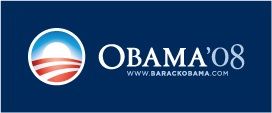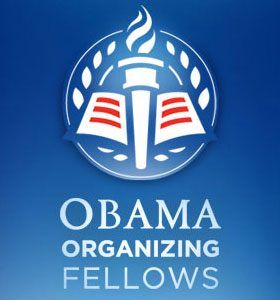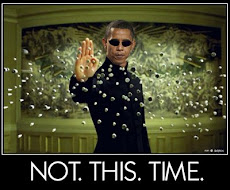The Orangeburg Massacre
The Civil Rights Act of 1964 ordered all public places and schools to desegregate and serve blacks and whites equally. For four years, from 1964 to 1968, Orangeburg's All Star Bowling Lanes refused to obey the Act and continued to turn away African Americans, including members of a Little League team who were in town for the Little League World Series. Black and white community members and business leaders urged All Star to integrate and filed appeals with the U.S. Justice Department, but all their efforts failed.
In February 1968, 300 students from South Carolina State and Claflin College demonstrated in the parking lot of the bowling alley. They were met by 100 law enforcement officers who beat them with sticks and drove them away. Two days later, the violent events known as The Orangeburg Massacre took place on the campus of South Carolina State.
 An act of racism in a small Southern town led to a peaceful protest by frustrated black college students who were denied use of the community’s only bowling alley.
An act of racism in a small Southern town led to a peaceful protest by frustrated black college students who were denied use of the community’s only bowling alley.A conservative Southern governor, wanting to appear tough to his white constituents, overreacted to the civil rights protest ordering a massive show of armed force. As emotions frayed and the situation veered out of control, nine white highway patrolmen opened gunfire onto a college campus—killing three black students and wounding 27 others.
All the students were unarmed and in retreat from the highway patrolmen at the time of the shooting. Yet, without warning, they were shot in their backs with deadly buckshot.
The killings occurred on February 8, 1968 on the campus of South Carolina State College in Orangeburg, South Carolina. Until the shooting, South Carolina was a southern state that had proudly celebrated a record of nonviolence during the turbulent civil rights years. One of the bloodiest tragedies of the Civil Rights era after four decades of deliberate denial. The killing of four white students at Kent State University in 1970 left an indelible stain on our national consciousness. But most Americans know nothing of the three black students killed at South Carolina State College in Orangeburg two years earlier.
In 1968, Orangeburg was a typical Southern town still clinging to its Jim Crow traditions. Although home to two black colleges and a majority black population, economic and political power remained exclusively in the hands of whites. Growing black resentment and white fear provided the kindling; the spark came when a black Vietnam War veteran was denied access to a nearby bowling alley, one of the last segregated facilities in town. Three hundred protestors from South Carolina State College and Claflin University converged on the alley in a non-violent demonstration. A melee with the police ensued during which police beat two female students; the incensed students then smashed the windows of white-owned businesses along the route back to campus. With scenes of the destruction in Detroit and Newark fresh in their minds, Orangeburg’s white residents, businessmen and city officials feared urban terrorists were now in Orangeburg. The Governor sent in the state police and National Guard.
By the late evening of February 8th, army tanks and over 100 heavily armed law enforcement officers had cordoned off the campus; 450 more had been stationed downtown. About 200 students milled around a bonfire on S.C. State’s campus; a fire truck with armed escort was sent in. Without warning the crackle of shotgun fire shattered the cold night air. It lasted less than ten seconds. When it was over, twenty-eight students lay on State’s campus with multiple buckshot wounds; three others had been killed. Almost all were shot in the back or side. Students and police vividly describe what they experienced that night.
In Orangeburg, police fingered Cleveland Sellers as the inevitable ‘outside agitator’ who, they claimed, had incited the students. Twenty-three years old, he had returned home, leaving his position as Student Nonviolent Coordinating Committee (SNCC) program director, to organize black consciousness groups on South Carolina campuses. Sellers had already attracted the attention of law enforcement officials as a friend of SNCC head Stokely Carmichael, who had frightened many Americans with his call for ‘Black Power.’ Carmichael’s ideas articulated the Movement’s shift from a focus on integration to one of gaining political and economic power within the black community.
South Carolina officials therefore saw Sellers as a direct challenge to their power. Wounded in the Massacre, Sellers was arrested at the hospital and charged with ‘inciting to riot.’ Though students made clear he was only minimally involved with their demonstrations, Sellers was tried and sentenced to one year of hard labor. He was finally pardoned 23 years after the incident. The U.S. Justice Department charged the nine police officers who admitted shooting that night with abuse of power. However, neither of two South Carolina juries would uphold the charges.
Sources: Wikipedia, FRANK BEACHAM - The Legacy of the Orangeburg Massacre,
TIM ARANGO - The New York Times
The Orangeburg Massacre
The murder of 3 young men,Henry Smith, Samuel Hammond, Delano Middleton and the wounding of 27 young men and women in a incident on the campus of South Carolina State College, over two years before the Kent State shooting, has received limited exposure to this day.
Dean of Student Life at Ferris State University, Leroy Wright tells the story of the Orangeburg Massacre.
The Orangeburg Massacre *Final Cut*
40 years ago, the Orangeburg Massacre-2/2
Rep. Bakari Sellers reflects on The Orangeburg Massacre
1968 Orangeburg Massacre: A First-Hand Retrospective Orangeburg 1968
The Forgotten Orangeburg South Carolina Israelite Massacre














































No comments:
Post a Comment